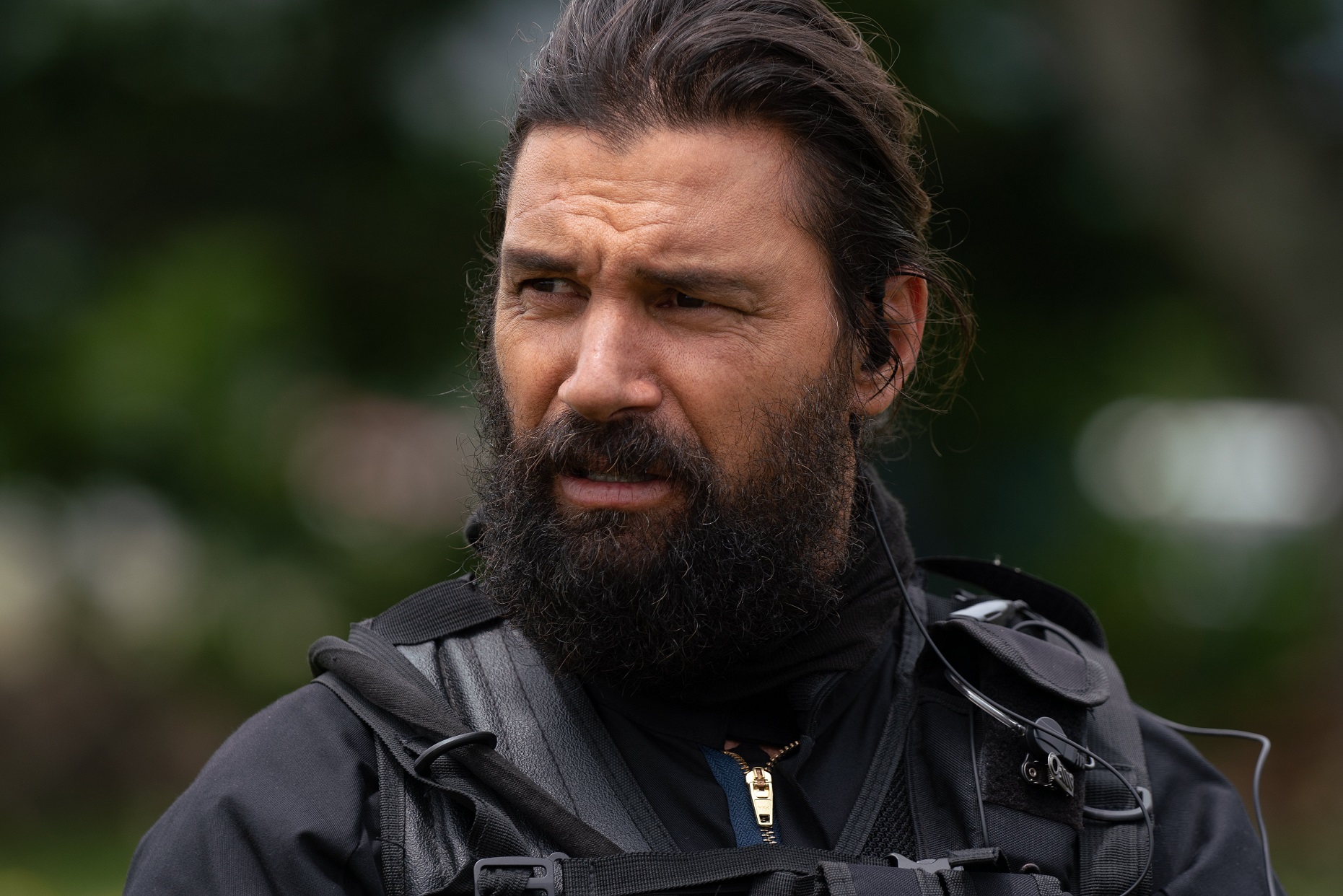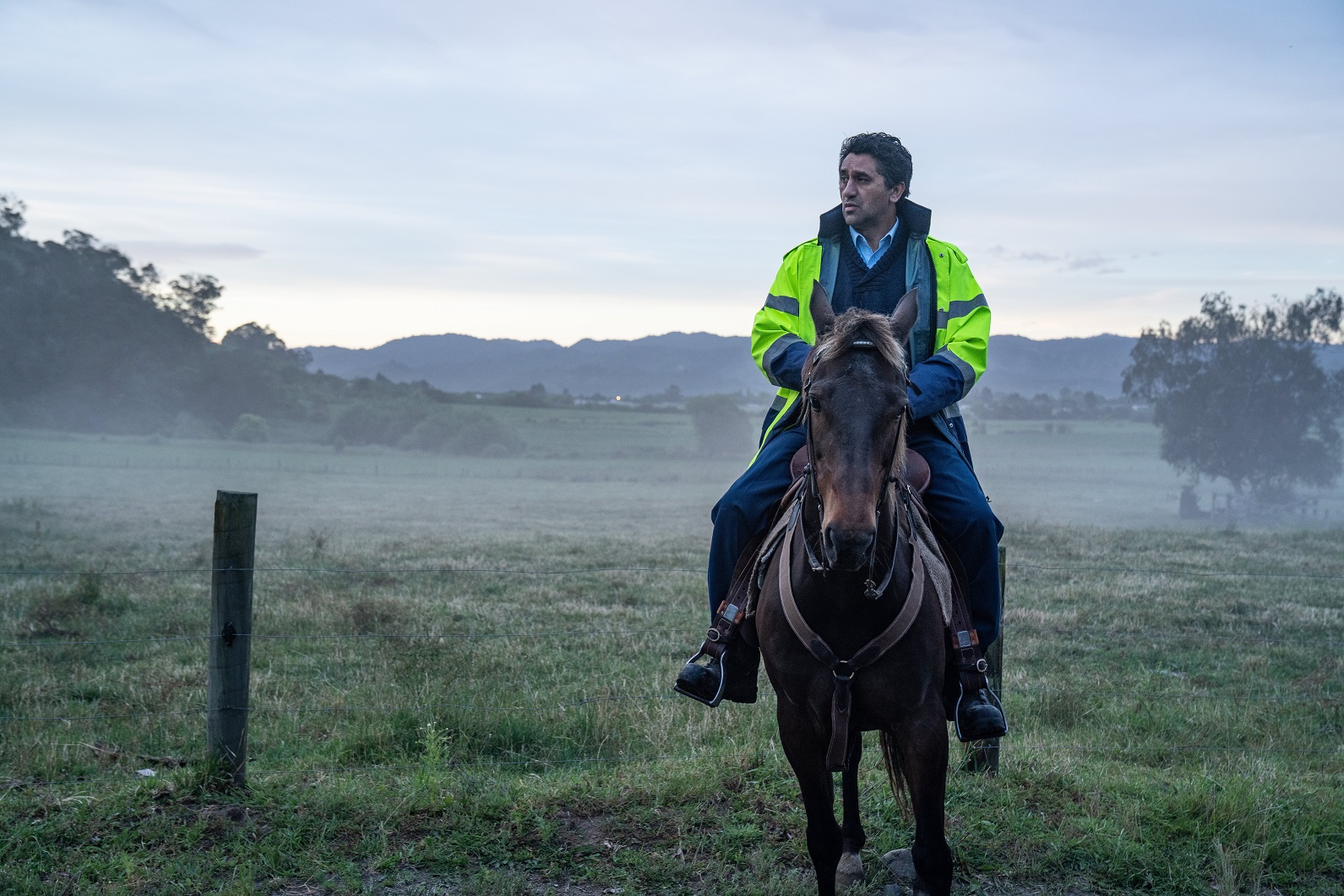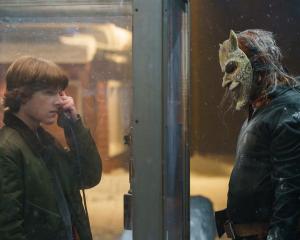
There’s whakapapa in Manu Bennett’s role in the new film Muru that goes way beyond the normal considerations of casting.
Sure, he ticks all the boxes for a casting director, bringing a barely contained menace from the first time we see him, hirsute to the point of wearing a permanent Balaclava.
But in the Kiwi actor’s telling, he carried a history going back centuries, spanning Empire and the globe, to the part of Sgt Kimiora, a razor-sharp patu in the Special Tactics Group (STG).
The film is a "response" to the raids on Tuhoe in 2007, when armoured, armed and masked police descended on the rural communities of Te Urewera, locking a laser target on men, women and children.
At the time, the West was still in the grip of 9-11’s febrile aftermath, terrorism lurking around every corner and racial profiling tagging some groups as more likely than others. But even so, the police raids presented as an almost comically desperate attempt to get in on the world’s big story, never mind the collateral damage.
When the dust had settled, all the police had managed was a couple of firearm infringements, for which artist and activist Tame Iti was required to do jail time.
Bennett, best known for his roles in the small screen Spartacus series and big screen Hobbit films, can claim an invitation from Iti himself to be involved in the dramatisation, but starts his story much further back — and further away, in Ireland.
The actor has Te Arawa and Ngati Kahungunu whakapapa, but also English heritage. Bennett is an English name. However, at some point it had made its way to Ireland.
Curious about the history, Manu Bennett and his sister travelled to Ireland to see what they could learn.
"All these wonderful Irish people were, ‘oh, what are you looking for, what’s your family name?’. We said ‘Bennett’, and they said ‘ah, OK, best you go up to that church on the hill’. And there was a church that was called the Church of Ireland, but it was really the Church of England that had been rebranded," he says.
All of a sudden he was wrestling with the sure knowledge that his family was intimately involved in a process of colonisation — it was there in his whakapapa, in his Anglo whakapapa. A Bennett forebear had crossed the Irish Sea to quash Catholicism and bring the locals to heel.
History was crowding in, but that wasn’t the half of it.
When the actor was working on Spartacus, playing the part of escaped slave, gladiator and rebel Crixus, the Australian-raised Bennett became aware of Te Kooti.
"I had this feeling that once upon a time in Maori history we had our own Spartacus, this guy called Te Kooti who was imprisoned on the Chatham Islands and just like Spartacus and Crixus, had jumped on a ship, sailed back to the mainland and started rounding up Maori to go and fight the oppression of the Crown."
The more he read about Te Kooti the stronger the connections seemed and he commissioned an LA leatherworker-to-the-stars to make him a jacket with Te Kooti’s flag on the back.
"Then I found an article about my ancestor on my Maori side called Te Pokiha Taranui, paramount chief out at Ngati Pikiao, Maketu."
He had sided with the Crown against Te Kooti, pursuing him into Te Urewera in the late 1860s.
"When I found that out, I cancelled my order for the jacket with the Te Kooti flag," he says.
History, it emerged, was even-handed with its discomfort. Between those two whakapapa, Maori and Pakeha, it was like being caught between two mountains, he says.
But back to that invitation from Iti to be a part of Muru, the Tearepa Kahi-directed, Cliff Curtis-led film in which Tuhoe kaumatua Iti plays himself.
That thread began after Bennett read a piece in the Sydney Morning Herald about the Treaty of Waitangi, back at the beginning of the millennium. At the time he didn’t know much of it, so 24 hours later was on a plane to Auckland, headed for the Treaty grounds.
Nearing Waitangi, Bennett became caught behind a van with "Tuhoe nation" on the back, and the following day met Iti.
"First of all I told him my name, and he went ‘ah, Bennett’. Because when Tame was young he was whangai-ed out to a Te Arawa family and he was raised in Rotorua."
He knew of Manu Bennett’s great-grandfather, New Zealand’s first Maori Anglican bishop, Charles Bennett, commander of the Maori Battalion, and educationalist John Bennett, among various other distinguished tipuna.
"Go forward a few years and [the Iti whanau] are close friends of mine and I hear about Tame Iti being arrested."

"That’s how far reaching that term is. And I think when it was used in the New Zealand vernacular for the first time with Tame Iti there was a big threat that word could encapsulate any Maori who was being an activist. I am sure to some degree there was some consideration of how that might be a tool in which to quieten the Maori down, starting with Tame Iti," he says.
"Tame Iti is the living voice of someone who represents a very strong leader in opposition to colonisation.
"That’s why I think his voice was replied to as it was, in an act that was almost identical to the colonial attack on Tuhoe 100 years beforehand."
And indeed Muru weaves those two stories together, the 2007 terror raids and 1916 operation by armed constabulary to arrest Rua Kenana, at Maungapohatu in Te Urewera.
That earlier raid targeted Kenana’s mountain-top community, the then wartime Government suspicious of the pacifism preached by Kenana — a leader of the Ringatu faith, founded earlier by Te Kooti.
Given all this, Bennett was determined to be part of the film that would finally tell the big story, putting events in their context. Especially as he’d gone on to play a pivotal role in supporting Tame Iti’s defence against the charges the Crown had tried to bring — and Iti wanted him in.
Covid did its best to trip him up at the last moment — Bennett stranded offshore filming Scandinavian beard-care commercials on location — but a quarantine hotel room was secured as his part was about to be reassigned.
Then, sitting in quarantine, he read the part of Sgt Kimiora.
"And when I read the script I could see my character was the one pointing a gun at Maori. I was actually very upset about that, I thought I had been invited into the fold to defend the cause for Tame. And I rang up Cliff Curtis and I said, ‘mate, why do I have to play this role’.
"And Cliff Curtis said to me, ‘Manu, I had to play Uncle Bully’," Bennett recalls through laughter.
"It was him saying that and then understanding that I was going to play against him, with Cliff as the lead. They say a hero is only as strong as their villain, or a protagonist is only as strong as the antagonist. You have to bring that energy out, and that’s my job as an actor.
"That was just one layer, him convincing me of ‘we’re actors, brother’, we have to do the role to make the whole thing, the composition strong. And then, I immediately started thinking again about Te Pokiha Taranui and Te Kooti and that was pretty much my decision-making on justifying and finding a reason to be Kimiora, play Kimiora.
"Some people, without giving anything away, will see Muru and say, ‘well, did it explode into this extent of drama, did it explode this much?’. And the thing is that what exploded in 2007 is the same as exploded 100 years ago when Rua Kenana’s son and his cousin were killed — one was shot in the back of the head, one was shot in the chest, executed. And I know that Tearepa, the director, said to me when we had the screening in Whakatane, they were most impressed that there were reverberations of both of those occasions, blended so well into this movie. And here I am, a modern day actor playing whatever role, but I’m kind of stepping into the role of my ancestor who is with the colonial forces hunting down a renegade, an activist."
Which isn’t to say playing the part didn’t involve some hurt.
"I am glad I was close enough to be the one chosen for this role, even though it sits about as comfortably with me as a Maori-Pakeha who is stuck between two mountains."
It is that time-collapsing, world-spanning context that Bennett wants people to think about when they see the film.
"If you really want to go to the coalface of the modern Maori and Pakeha issue, then it is worth going and seeing this film with an open mind to the fact that it is a song about the past and the present. It is a response, as Tearepa says. It is not a fact-for-fact performance of the Tuhoe raids. It is actually as much about the raid 100 years ago."
It is an echo, and the echo resounding down the years is, for Bennett, the story of colonisation.
"How the hell do we break out of it unless we make a whole lot more Murus and they hit the mark?" he asks.
Bennett is happy the film demands more of its audience than some will be used to, but also offers another way in.
Actually look at the faces of these so-called terrorists, he suggests. The film was shot in those same hills, among those same people.
Tearepa Kahi did a good job of capturing the people of Tuhoe and the way they are in the community, he says.
"Maybe I would ask a New Zealand audience to go into this whare, this wharenui, called a cinema, and sit with the people on the screen. Sit with the people as you would if you went down to Ohinemutu and went into Tamatekapua meeting house, and sat with the Maori there and they welcomed you on, and you felt very connected. And then imagine the door bursting open and there are STG soldiers, just because somebody had an argument against colonisation.
"I don’t think there would be many New Zealanders who wouldn’t go, ‘hey, hey, wait up, wait up, it can’t be everybody here? You want to point a gun at everybody? What’s that about?’."
It’s the mistake of calling people names.
"There is a community involved in this story, so go in and have respect for Tuhoe as a community."












